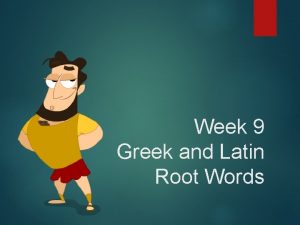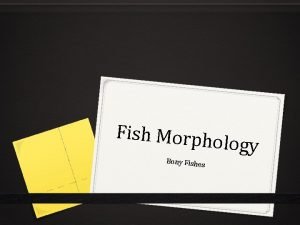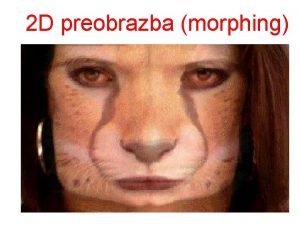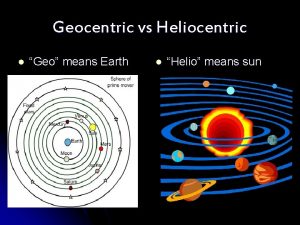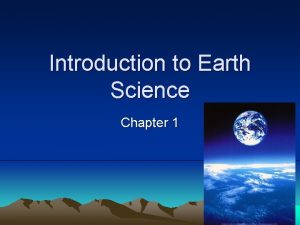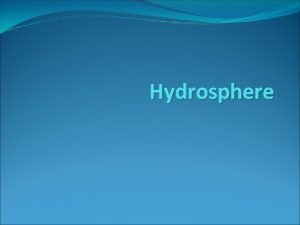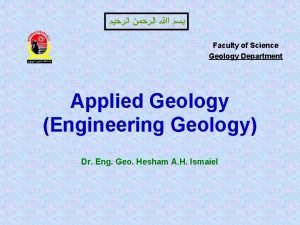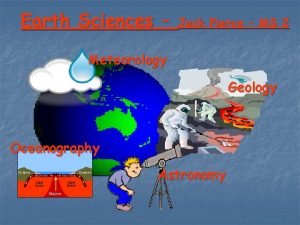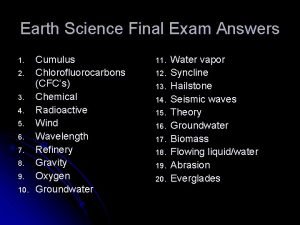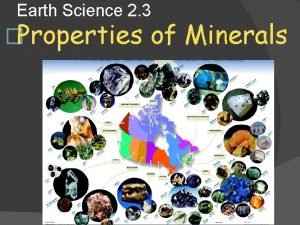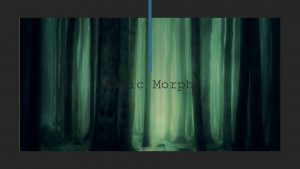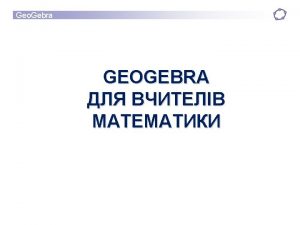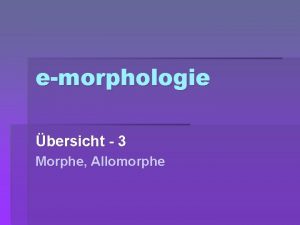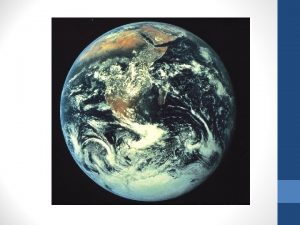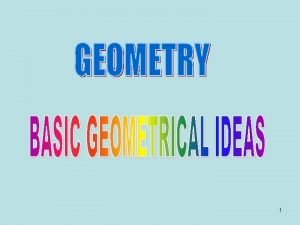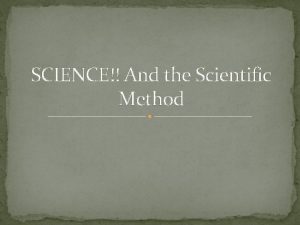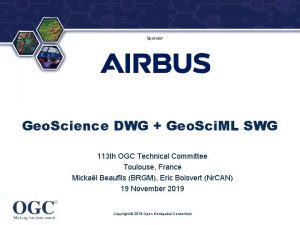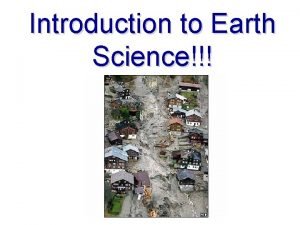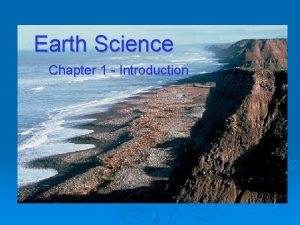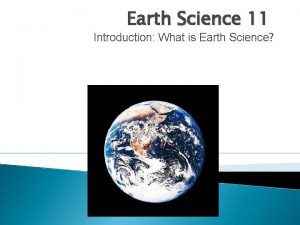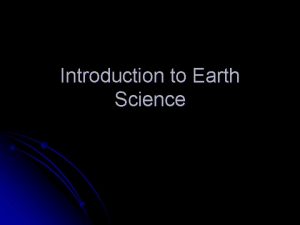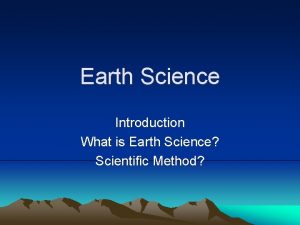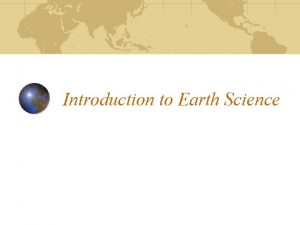INTRODUCTION GEO EARTH MORPH FROM OLOGY SCIENCE It






























- Slides: 30


INTRODUCTION • GEO= EARTH , MORPH= FROM , OLOGY = SCIENCE • It is known as systematic study of earth's feature. • An orogeny extends in time before ten million years ago. • Some of these mountains building periods occur between 600 and 3500 million years ago. • The three most recent origins are CALEDONIAN , HERCYNIAN , ALPINE

CALEDONIAN HERCYNIAN 350 Million years ago. Raised mountains of 240 million years ago was characterised by Scotland ranges such as the Scandinavia. URAL MOUNTAIN and WELSH HIGHLANDS of Britain ALPINE 30 million years ago. Such as ALPS, HIMALAYAS ANDES





OTHER LANDFORMS PLATAUE PLAINS

THREE BROADER CATEGORIES OF MOUNTAINS MOUNTAIN OF ELEVETION OR UP LIFT MENT MOUNTAIN OF ACCUMALATION MOUNTAINS OF ERROSION OR RESIDUAL MOUNTAIN

RESIDUAL MOUNTAIN

THE FIRST CATEGORY OF MOUNTAINS ARE FOLD MOUNTAINS BLOCK MOUNTAINS

MOUNTAIN • Raise above 600 M from land is called mountain. • Below 600 m it is known as Hill • Has steep slope sides with sharp edges and summit • The highest part of mountain is called as peak • Mt. Everest is the highest peak in the world • Long chain of mountain is called as mountain ranges.

TYPES OF MOUNTAIN FOLD MOUNTAINS BLOCK MOUNTAINS VOLCANIC MOUNTAIN RESIDUEL MOUNTAINS

FOLD MOUNTAINS • The term ‘fold’ means the way it was formed • Million of years slow movements have raised to these mountains but movements were not vertical it was horizontal causing the earth crust to wrinkle or fold. • The unfolds are called as anticlines and down folds are called as synclines. • According to Wegener's theory the young fold mountains were formed



• The Urals in Russia and Aravalli ranges in India are the oldest fold mountains. • These mountain have low altitude with gentle slop because they have been subjected to denudation. • The most recent phase of young mountains building took place over 25 million years ago these are known as young fold mountains

BLOCK MOUNTAIN

BLOCK MOUNTAINS • Forms when tectonic plates move away from each other causing surface to crack. • These cracks causes Faulting an may result in mass of land being pushed up between parallel cracks. • Tensional forces may also cause the central portion to be let down between two adjacent fault blocks forming GARBEN OR RIFT VALLEY. • In India we have Narmada valley lying between the vindhya and satpura ranges

NARMADA VALLEY

VOLCANIC MOUNTAIN • Result of the accumulation of volcanic material. • Have gentle slopes due to material flows down. • Also referred as mountain of accumulation.

RESIDUAL MOUNTAIN • Victims of erosion and agents of gradation such as winds, rain and running water

PLATEAUS

TYPES OF PLATEAUS TECTONIC FAULT BLOCK INTERMON TANE PLATEAUS CONTINEN TAL VOLCANIC DISSECTED

TECTONIC Caused by earth movements E. g. Deccan plateau

INTERMONTANE Enclosed by fold mountains Usually very high E. G- Tibetan plateau

VOLCANIC Forms when successive sheet of LAVA Usually very high E. G- Tibetan plateau

PLAINS STRUCTURAL PLAINS EROSIONAL PLAIN DEPOSITIONAL PLAINS

TYPES OF PLAIN Coastal Plain STRUCTURAL PLAINS Lacustrine Loess plains Alluvial plain

EROSIONAL PLAINS PENEPLAINS PEDIPLAINS
 Wordsology
Wordsology Globiform fish examples
Globiform fish examples My ology
My ology Meta - change morph -
Meta - change morph - Meta means in metamorphism
Meta means in metamorphism Morph between two images
Morph between two images Morpheme vs phoneme
Morpheme vs phoneme Heliocentric
Heliocentric Chapter 1 introduction to earth science
Chapter 1 introduction to earth science Introduction to earth science
Introduction to earth science My favorite subject is arabic
My favorite subject is arabic Wwwk-6.thinkcentral
Wwwk-6.thinkcentral What letters designate an air mass from the gulf of mexico?
What letters designate an air mass from the gulf of mexico? Earth science sol 2010
Earth science sol 2010 Lab practical review earth science
Lab practical review earth science Earth science regents locating an epicenter
Earth science regents locating an epicenter Earth science regents lab practical
Earth science regents lab practical Earth science grade 9
Earth science grade 9 Dynamic equilibrium earth science
Dynamic equilibrium earth science The hydrosphere includes the
The hydrosphere includes the 4th grade science jeopardy
4th grade science jeopardy Geology earth science definition
Geology earth science definition Dinoflagellates
Dinoflagellates Earth science meaning
Earth science meaning Geology earth science definition
Geology earth science definition Earth science sol review
Earth science sol review Earth science vs geology
Earth science vs geology Earth science final
Earth science final Earth science lab practical
Earth science lab practical Earth science semester 2 final exam answers
Earth science semester 2 final exam answers Properties of minerals hardness
Properties of minerals hardness
